E-flite 102" YAK 54 Specification
- Category
- Toys & accessories
- Type
- Specification
This manual is also suitable for

Byp Yak
Assembly Manual

2
Introduction
Thank you for purchasing the Quique Somenzini designed
Byp Yak ARF Competition Indoor 3D/Precision Aerobatic
model, which is based on his popular gas-powered
competitive Yak aerobatic airplanes Quique designed this
model to compete at top-level events such as the E-TOC and
for nationwide demos. Quique uses his own unique A-frame
design on the fuselage shape, which reduces flex in the more
rigid fuselage giving you more precision control.
From super slow to top airspeed, flying the Byp Yak features
a great combination of smoothness and precision, helping
make this foam Byp Yak an extreme 3D flying performer
like no other foam airplanes of this caliber. The Byp Yak
is capable of doing all the maneuvers that you have ever
dreamt of and more.
New Foam
E-flite
™
is introducing a new flat foam material with this
aircraft. It is much more durable than other flat foams used in
the past. We believe this will bring a higher level of success
and enjoyment to your Byp Yak experience.
Table of Contents
Introduction ................................................................2
Specifications .............................................................3
Contents of Kit/Parts Layout .........................................
3
Quique Somenzini’s Competition Radio Equipment .........
4
Alternative Radio Equipment ........................................
4
Important Information About Motor Selection .................
5
Quique Somenzini’s Competition Outrunner Setup ..........
5
Required Tools and Adhesives ......................................
5
Optional Accessories ..................................................
5
Using the Manual .......................................................
6
Warning ....................................................................
6
Before Starting Assembly .............................................
6
Note on Lithium Polymer Batteries .................................
6
Limited Warranty Period ..............................................
6
Wing Installation ......................................................
10
Stabilizer and Rudder Installation ...............................
18
Motor and Speed Control Installation ..........................
22
Radio Installation ......................................................
24
Landing Gear Installation ...........................................
32
Center of Gravity / Battery Installation ........................
34
Control Throws .........................................................
36
Quique Somenzini’s Competition Radio Setup ..............
36
2006 Official AMA
National Model Aircraft Safety Code .................
38

3
Specifications
Wingspan: 32 in (815mm)
Length: 31.25 in (795mm)
Wing Area: 490 sq in (32 sq dm)
Weight w/o Battery: 9.5–10 oz (270–285 g)
Weight w/Battery: 10.5–11.5 oz (300–325 g)
Contents of Kit/Parts Layout
Large Replacement Parts:
EFL2326 Wing Set w/Struts
EFL2327 Fuselage
EFL2328 Tail Assembly
EFL2331 Wheel Pants/Landing Gear Covers
EFL2134 Landing Gear
Small Replacement Parts:
EFL2329 Carbon Fiber Supports
EFL2330 Aileron Rods
EFL2086 Hook & Loop Tape, 1" x 1.375" (2)
EFLA200 Micro Control Horns
EFLA202 Micro Tail Skid
EFLA203 Micro Control Connectors
EFLA213 E-flite/JR/Horizon Decals
EFLA214 Micro Pull-Pull Set
EFLA220 Foam Park Wheels, 1.25"

4
Quique Somenzini’s Competition Radio
Equipment
Listed below is the exact radio equipment that Quique
Somenzini uses when flying the Byp Yak in competitions. In
the back of the manual, we also provide you with his exact
radio setup, listing his dual rates, exponential, and mixing
programs.
Transmitter
JR 9303 XP9303 9-Channel, 30-Model Memory
Transmitter
Purchase Separately
JSP30610 6-Channel UltraLite Rx w/o Crystal,
Positive Shift JR/Air (72 MHz)
JRPXFR** FM Receiver Crystal
JRPS281 DS281 Sub-Micro Digital (3)
Alternative Radio Equipment
You will need a minimum 6-channel transmitter (for proper
mixing and dual rate capabilities), crystals, micro receiver,
and three sub-micro servos. You can choose to purchase a
complete radio system that includes all of these items or, if
you are using an existing transmitter, just purchase the other
required equipment separately.
We recommend the crystal-free, interference-free Spektrum
™
DX6 2.4GHz DSM
™
6-channel system, which includes a
micro receiver and 4 sub-micro servos.
Complete Radio System
SPM2460 DX6 DSM 6CH Park Flyer w/4-S75
Or Purchase Separately
JSP30610 6-Channel UltraLite Rx w/o Crystal,
Positive Shift JR/AIR (72MHz)
JSP30615 6-Channel UltraLite Rx w/o Crystal,
Negative Shift Fut/HRC (72MHz)
JRPXFR** FM Receiver Crystal (JR only, not
AR6000)
Or
SPM6000 AR6000 DSM 6CH Park Flyer Receiver
And
EFLRS75 7.5 Gram Sub-Micro Servo (3)
JRPA092 Servo Extension, 3" Standard (may be
needed for ESC)

5
Important Information About
Motor Selection
We recommend you use the E-flite
™
brushless outrunner
motor Quique Somenzini uses on his Byp Yak. All of our
flight tests were done using the motor listed below with the
Li-Po battery listed below. Another alternative battery is to
use the Thunder Power 730mAh 3-Cell 11.1V Li-Po Battery
(THP7303SJPL) for extended flight time.
Quique Somenzini’s Competition
Outrunner Setup
EFLM1200 Park 370 Brushless Outrunner Motor,
1080Kv
CSEPHX10L 10-Amp Brushless ESC
APC10038SF 10x3.8 Slow Flyer Prop
EFLC3005 Celectra
™
1–3 Cell Li-Po Charger
Recommended Battery (by E-Flite)
THP4803SJPL 480mAh 3-Cell 11.1V Li-Po, JST
This setup is very light for slow precise indoor flying.
Required Tools and Adhesives
Tools & Equipment
EFLA257 Screwdriver, #0 Phillips (or included with
EFLA250)
EFLA251 Hex Wrench: 3/32" (or included with
EFLA250)
Hobby knife
Square
Ruler
Felt-tipped pen
String
Paper Towels/Tissue
T-Pins
Pliers
Low-Tack tape
Adhesives
EFLA208 Foam CA 1oz/Activator 2oz Pack
EFLA209 Foam Compatible Medium CA, 1oz
Optional Accessories
EFLA110 Power Meter
THP7303SJPL 730mAh 3-Cell 11.1V Li-Po Battery (for
longer flight times)

6
Before Starting Assembly
Before beginning the assembly of your Byp Yak, remove
each part from its bag for inspection. Closely inspect the
fuselage, wing panels, rudder and stabilizer for damage. If
you find any damaged or missing parts, contact the place of
purchase.
Note on Lithium Polymer Batteries
Lithium Polymer batteries are significantly more
volatile than alkaline or Ni-Cd/Ni-MH batteries
used in RC applications. All manufacturer’s
instructions and warnings must be followed
closely. Mishandling of Li-Po batteries can
result in fire. Always follow the manufacturer’s
instructions when disposing of Lithium Polymer
batteries.
Limited Warranty Period
Horizon Hobby, Inc. guarantees this product to be free
from defects in both material and workmanship at the
date of purchase.
Using the Manual
This manual is divided into sections to help make assembly
easier to understand, and to provide breaks between each
major section.
Remember to take your time and follow the directions.
Warning
An RC aircraft is not a toy! If misused, it can cause serious
bodily harm and damage to property. Fly only in open
areas, preferably at AMA (Academy of Model Aeronautics)
approved flying sites, following all instructions included with
your radio.
Keep loose items that can get entangled in the propeller
away from the prop, including loose clothing, or other
objects such as pencils and screwdrivers. Especially keep
your hands away from the propeller.

7
Limited Warranty & Limits of Liability
Pursuant to this Limited Warranty, Horizon Hobby, Inc. will,
at its option, (i) repair or (ii) replace, any product determined
by Horizon Hobby, Inc. to be defective. In the event of a
defect, these are your exclusive remedies.
This warranty does not cover cosmetic damage or damage
due to acts of God, accident, misuse, abuse, negligence,
commercial use, or modification of or to any part of the
product. This warranty does not cover damage due to
improper installation, operation, maintenance, or attempted
repair by anyone other than an authorized Horizon Hobby,
Inc. service center. This warranty is limited to the original
purchaser and is not transferable. In no case shall Horizon
Hobby’s liability exceed the original cost of the purchased
product and will not cover consequential, incidental or
collateral damage. Horizon Hobby, Inc. reserves the right to
inspect any and all equipment involved in a warranty claim.
Repair or replacement decisions are at the sole discretion
of Horizon Hobby, Inc. Further, Horizon Hobby reserves the
right to change or modify this warranty without notice.
REPAIR OR REPLACEMENT AS PROVIDED UNDER
THIS WARRANTY IS THE EXCLUSIVE REMEDY OF THE
CONSUMER. HORIZON HOBBY, INC. SHALL NOT BE
LIABLE FOR ANY INCIDENTAL OR CONSEQUENTIAL
DAMAGES.
As Horizon Hobby, Inc. has no control over use, setup,
final assembly, modification or misuse, no liability shall be
assumed nor accepted for any resulting damage or injury.
By the act of use, setup or assembly, the user accepts all
resulting liability.
If you as the purchaser or user are not prepared to accept
the liability associated with the use of this product, you
are advised to return this product immediately in new and
unused condition to the place of purchase.
Safety Precautions
This is a sophisticated hobby product and not a toy. It must
be operated with caution and common sense and requires
some basic mechanical ability. Failure to operate this product
in a safe and responsible manner could result in injury or
damage to the product or other property. This product is not
intended for use by children without direct adult supervision.
The product manual contains instructions for safety, operation
and maintenance. It is essential to read and follow all the
instructions and warnings in the manual, prior to assembly,
setup or use, in order to operate correctly and avoid damage
or injury.

Inspection or Repairs
If your product needs to be inspected or repaired, please
call for a Return Merchandise Authorization (RMA). Pack
the product securely using a shipping carton. Please note
that original boxes may be included, but are not designed
to withstand the rigors of shipping without additional
protection. Ship via a carrier that provides tracking and
insurance for lost or damaged parcels, as Horizon Hobby,
Inc. is not responsible for merchandise until it arrives and
is accepted at our facility. Include your complete name,
address, phone number where you can be reached during
business days, RMA number, and a brief summary of the
problem. Be sure your name, address, and RMA number are
clearly written on the shipping carton.
Warranty Inspection and Repairs
To receive warranty service, you must include your original
sales receipt verifying the proof-of-purchase date. Providing
warranty conditions have been met, your product will be
repaired or replaced free of charge. Repair or replacement
decisions are at the sole discretion of Horizon Hobby.
Questions, Assistance, and Repairs
Your local hobby store and/or place of purchase cannot
provide warranty support or repair. Once assembly, setup
or use of the product has been started, you must contact
Horizon Hobby, Inc. directly. This will enable Horizon to
better answer your questions and service you in the event
that you may need any assistance.
Questions or Assistance
For questions or assistance, please direct your email to
productsupport@horizonhobby.com, or call 877.504.0233
toll free to speak to a service technician.
8

Non-Warranty Repairs
Should your repair not be covered by warranty and the
expense exceeds 50% of the retail purchase cost, you will
be provided with an estimate advising you of your options.
You will be billed for any return freight for non-warranty
repairs. Please advise us of your preferred method of
payment. Horizon Hobby accepts money orders and cashiers
checks, as well as Visa, MasterCard, American Express,
and Discover cards. If you choose to pay by credit card,
please include your credit card number and expiration date.
Any repair left unpaid or unclaimed after 90 days will be
considered abandoned and will be disposed of accordingly.
Electronics and engines requiring inspection or repair should
be shipped to the following address (freight prepaid):
Horizon Service Center
4105 Fieldstone Road
Champaign, Illinois 61822
All other products requiring inspection or repair should be
shipped to the following address (freight prepaid):
Horizon Product Support
4105 Fieldstone Road
Champaign, Illinois 61822
9

Wing Installation
Required Parts
• Fuselage • Wing strut (2)
• Lower wing • Upper wing
• Strut reinforcement disk (14)
• .045” x 6" (1.15mm x 153mm) carbon rod (6)
• .045” x 13" (1.15mm x 330mm) carbon rod (2)
• .045” x
12
5
/
8
" (1.15mm x 320mm) carbon rod (2)
Required Tools and Adhesives
• Foam-safe CA • Hobby knife
• Square
1. Place the fuselage on a flat surface. Use a square
at the rudder to check that the fuse bottom and
fin are square to each other. Lightly sand the
bottom of the fuse where indicated if necessary.
10

2. Test fit the lower wing to the fuselage. Place the
wing onto the fuse bottom, aligning the servo
holes in the wing with the servo holes in the
fuselage. Carefully check to make sure the lower
wing is square to the fuselage by measuring from
the wing tip to the fin on both sides. Use foam-
safe CA to glue the lower wing to the fuselage.
Note: You can use foam-safe activator to speed
up the CA cure time.
3. Locate the wing struts. Use a sharp hobby
knife to remove the lower sections from the
main section.
11

5. Place the top wing onto a flat surface. Position
the wing struts and fuselage onto the wing. Hold
the wing flat while gluing the fuselage and side
force generators to the wing.
Note: It is recommended to use a square to
check the wing strut alignment to the top wing.
Note: DO NOT glue the lower strut extension at
this time.
4. Position the wing strut in the hole closest to the
aileron of the bottom wing. It may be necessary to
trim the reinforcement tape from the hole before
fitting the strut. Use a square and foam-safe CA
to glue both the wing struts into position.
12

Note: You may want to locate a thin piece
of Depron or other foam for the next section.
A thin board will work too. This is necessary
to keep the wing as flat as possible to keep
from inducing any twist in the wing, which will
greatly affect the performance of your Byp Yak.
6. Glue the strut reinforcement disks to the bottom
of the top and bottom wings. The positions have
been marked at the factory. The slots in the disks
will run parallel to the spars.
7. Once the CA has fully cured from Step 6, slide
a hobby knife into each of the reinforcements to
make a thin slot. Do not cut an official slot; just
slip the knife in and out.
13

8. Slide a .045" x 12
5
/
8
" (1.15mm x 320mm)
carbon rod from the center of the bottom wing to
the top wing near the strut. Leave at least 1/16"
(1.5mm) of the rod exposed at both ends. Glue
the rod only at the fuselage. Apply foam-safe CA
to the rod both at the inside and outside in order
to capture the rod in position.
9. Place the top wing on a surface that will allow
the wing panel to lie perfectly flat. Apply glue to
the inside edge of the rod. Once the glue fully
cures, carefully lift the airframe and apply CA to
the top of the rod.
10. Repeat Steps 8 and 9 for the opposite side.
14

11. Slide a .045" x 13" (1.15mm x 330mm)
carbon rod near the wing strut on the bottom
wing to the center of the top wing near the
fuselage. Leave at least 1/16" (1.5mm) of the
rod exposed at both ends. Glue the rod only at
the bottom wing. Apply foam-safe CA to the rod
both at the inside and outside in order to capture
the rod in position.
12. Place the bottom wing on a surface that will
allow the wing panel to lie perfectly flat. Apply
glue to the inside edge of the rod. Once the glue
fully cures, carefully lift the airframe and apply
CA to the top of the rod.
13. Repeat Steps 11 and 12 to complete the
cross bracing.
15

15. Position two .045" x 6" (1.15mm x 153mm)
carbon rods from the tips of the top and bottom
wing to the center of the strut. Leave at least
1/16" (1.5mm) of the rod exposed on both ends.
Apply CA to only the struts at the wing tips.
14. Attach the remaining two strut reinforcement
disks to the inside of the struts. Once the CA
cures, slide one of the .045" x 6" (1.15mm x
153mm) carbon rods from the center of the cross
brace through the reinforcement. Carefully wrap
the intersection using string. Soak the thread at
the intersection with thin CA to secure the joint.
Note: Do not glue the carbon rod at the strut
at this time.
16

16. Use a straight edge to make sure the wing
strut is not bent in or out on the wing. Glue both
sides of the rod to the wing strut.
17. Repeat Steps 14 through 16 to complete the
wing installation.
17

Stabilizer and Rudder Installation
Required Parts
• Fuselage • Stabilizer w/left elevator
• Right elevator • Carbon elevator joiner (2)
• Rudder • Control horn (2)
• Hinge tape
Required Tools and Adhesives
• Foam-safe CA • Ruler
• Paper towel/tissue • String
• T-pins • Foam-safe activator
1. Use foam-safe CA to glue the plywood elevator
horn into position.
Note: Ensure that the holes in the control horn
are in line with the hinge line.
2. Slide the stabilizer into position, centering it in the
slot. Sight from the rear of the fuselage and check
that the stabilizer is parallel to the wings. If not,
lightly sand the opening in the fuselage.
18

3. Hinge the elevator using the supplied tape. Apply
tape to the hinge line on the top, and then deflect
the elevator up to apply the tape on the bottom.
4. Use foam-safe CA to glue the carbon elevator
joiner to the top and bottom of the elevators.
Note: Make sure you are gluing the
joiner directly onto the foam and not onto
the hinge tape.
19

5. Check the alignment of the stabilizer to the front
of the fuselage. The distances between a point
centered on the fuselage to either stabilizer tip
should be the same.
6. Once satisfied with the stabilizer alignment,
use foam-safe CA to glue the stabilizer to the
fuselage. Clean up excess glue with a tissue or
paper towel.
Note: You can use foam-safe Activator to speed
up this CA cure time.
20
Page is loading ...
Page is loading ...
Page is loading ...
Page is loading ...
Page is loading ...
Page is loading ...
Page is loading ...
Page is loading ...
Page is loading ...
Page is loading ...
Page is loading ...
Page is loading ...
Page is loading ...
Page is loading ...
Page is loading ...
Page is loading ...
Page is loading ...
Page is loading ...
Page is loading ...
Page is loading ...
-
 1
1
-
 2
2
-
 3
3
-
 4
4
-
 5
5
-
 6
6
-
 7
7
-
 8
8
-
 9
9
-
 10
10
-
 11
11
-
 12
12
-
 13
13
-
 14
14
-
 15
15
-
 16
16
-
 17
17
-
 18
18
-
 19
19
-
 20
20
-
 21
21
-
 22
22
-
 23
23
-
 24
24
-
 25
25
-
 26
26
-
 27
27
-
 28
28
-
 29
29
-
 30
30
-
 31
31
-
 32
32
-
 33
33
-
 34
34
-
 35
35
-
 36
36
-
 37
37
-
 38
38
-
 39
39
-
 40
40
E-flite 102" YAK 54 Specification
- Category
- Toys & accessories
- Type
- Specification
- This manual is also suitable for
Ask a question and I''ll find the answer in the document
Finding information in a document is now easier with AI
Related papers
-
E-flite Extra 260 3D Profile Assembly Manual
-
E-flite YAK-54F Specification
-
E-flite Mini Pulse XT PNP Assembly Manual
-
E-flite 4-Site Assembly Manual
-
E-flite Ultimate 20-300 10 ARF Assembly Manual
-
E-flite Mini Pulse PNP Assembly Manual
-
E-flite Mini FuntanaX Assembly Manual
-
E-flite Extra 260 480 ARF Assembly Manual
-
E-flite CARBON-Z YAK 54 User manual
-
E-flite thunderbolt p-47 Assembly Manual
Other documents
-
Futaba R114F-72H User manual
-
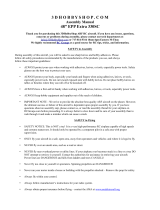 3D Hobby Shop 48" EPP Extra Assembly Manual
3D Hobby Shop 48" EPP Extra Assembly Manual
-
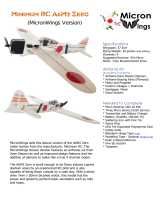 MicronWings Minimum RC A6M2 Zero User manual
MicronWings Minimum RC A6M2 Zero User manual
-
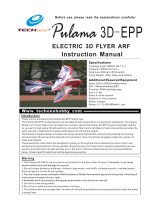 Techone pulama 3D-EPP User manual
Techone pulama 3D-EPP User manual
-
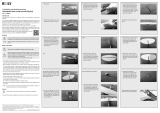 Reely 1590613 Operating instructions
Reely 1590613 Operating instructions
-
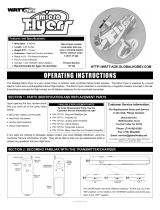 WattAge Micro Flyer Operating instructions
WattAge Micro Flyer Operating instructions
-
Humble Crew WO619 User manual
-
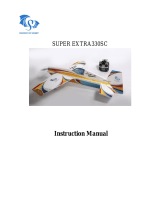 Vigorkiy rc hobby SUPER EXTRA330SC User manual
Vigorkiy rc hobby SUPER EXTRA330SC User manual
-
Blade EFLH1527 User manual
-
Fancy Foam Models 33” Fenix V2 Assembly Instructions













































